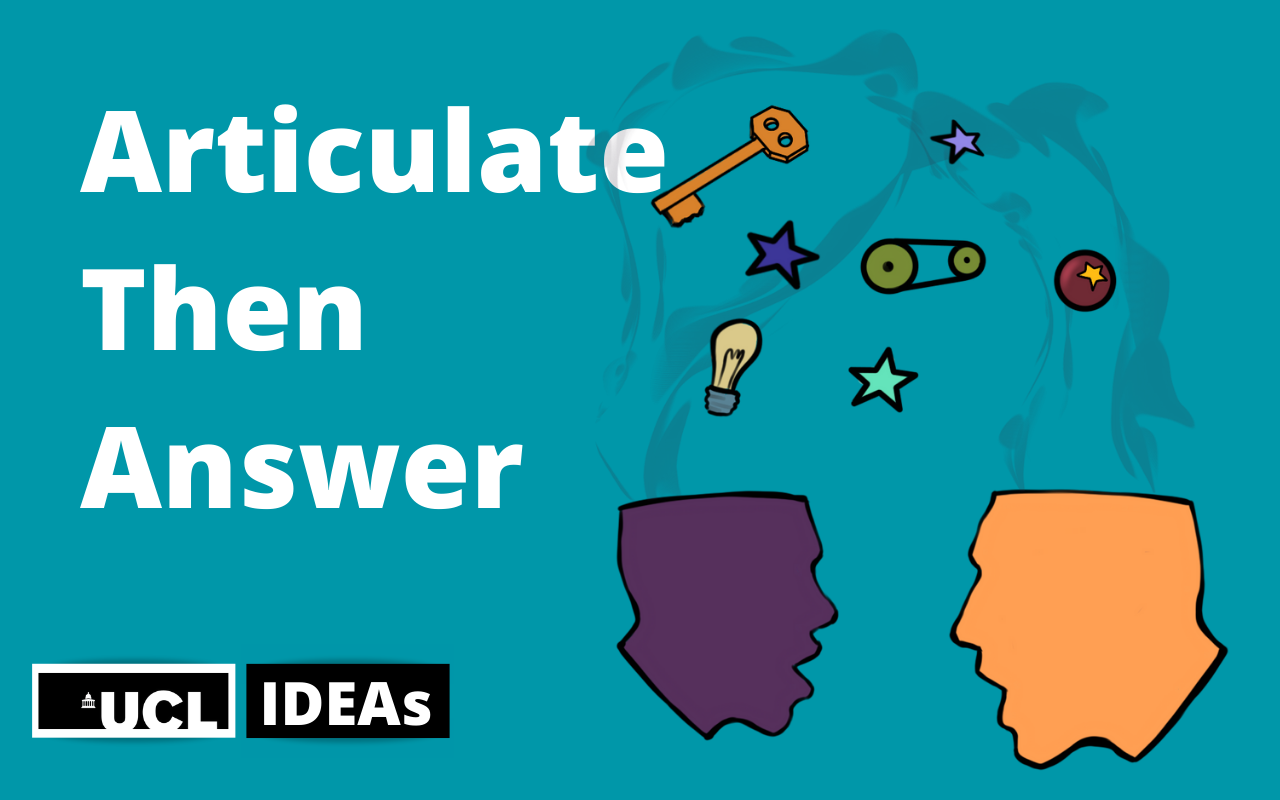Articulate then answer
Overview of how to design an 'Articulate then answer' digital learning activity.

29 April 2021
About this activity
Give students the opportunity to articulate their thinking before answering:
- 30 seconds silent thinking before any answering
- Brainstorm in pairs first for 2-3 minutes
- Write some thoughts down before answering
- Discuss with your neighbour first.
Why use it
- Encourages reflection on learners’ gaps in their knowledge or understanding.
- If students write questions for their peers to answer it can deepen their own understanding and that of peers.
When to use it
- To build confidence;
- To encourage reflection;
- To foster a sense of community;
- To share different perspectives on the same topic;
- To recall knowledge;
- Possibly more feasible in smaller groups or with a seminar type setting.
When to use it
Depending on purpose:
- at the beginning as a way to recall existing knowledge
- in the middle to clarify points or formulate questions
- at the end of the question to check understanding and outstanding points
- as a reflective tool
Digital tools that might be used
Synchronous and asynchronous:
- break-out rooms (with some preparation)
- Moodle chat
- Teams meeting
- share document (for the entire group)
- whiteboard
- Mentimeter (open questions)
- annotation software.
Speed of set up time
10-30 minutess depending on tools being used.
Workload
Depending on resources involved and planning the structure:
- To define the activity
- To prepare questions
- To establish an etiquette with the students
This activity may become easier and more spontaneous if repeated throughout the modules/the sessions.
Other resources
Shared whiteboards (Zoom or Blackboard Collaborate).
Got something to say? Comment on this activity on the IDEAs blog.
 Close
Close



